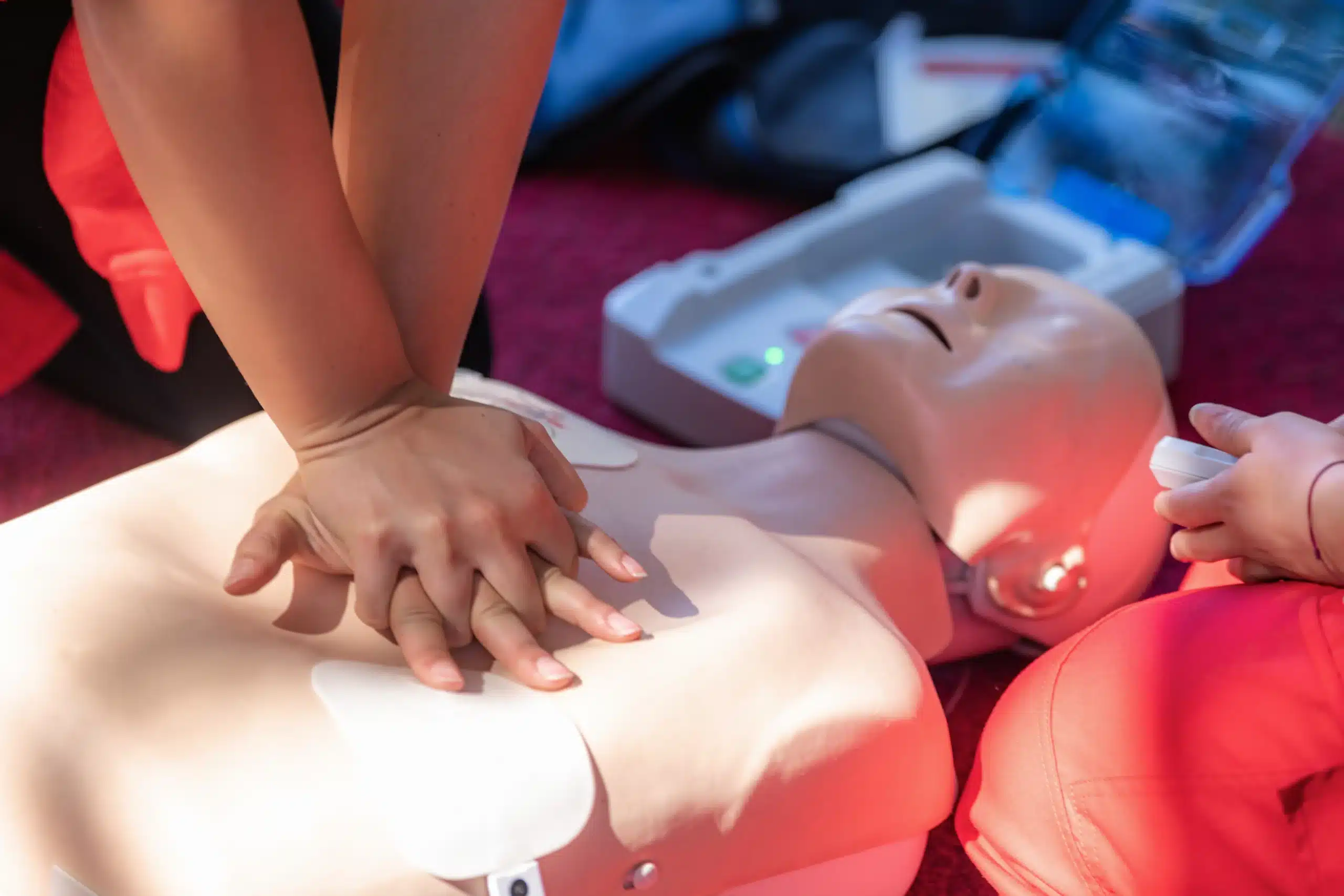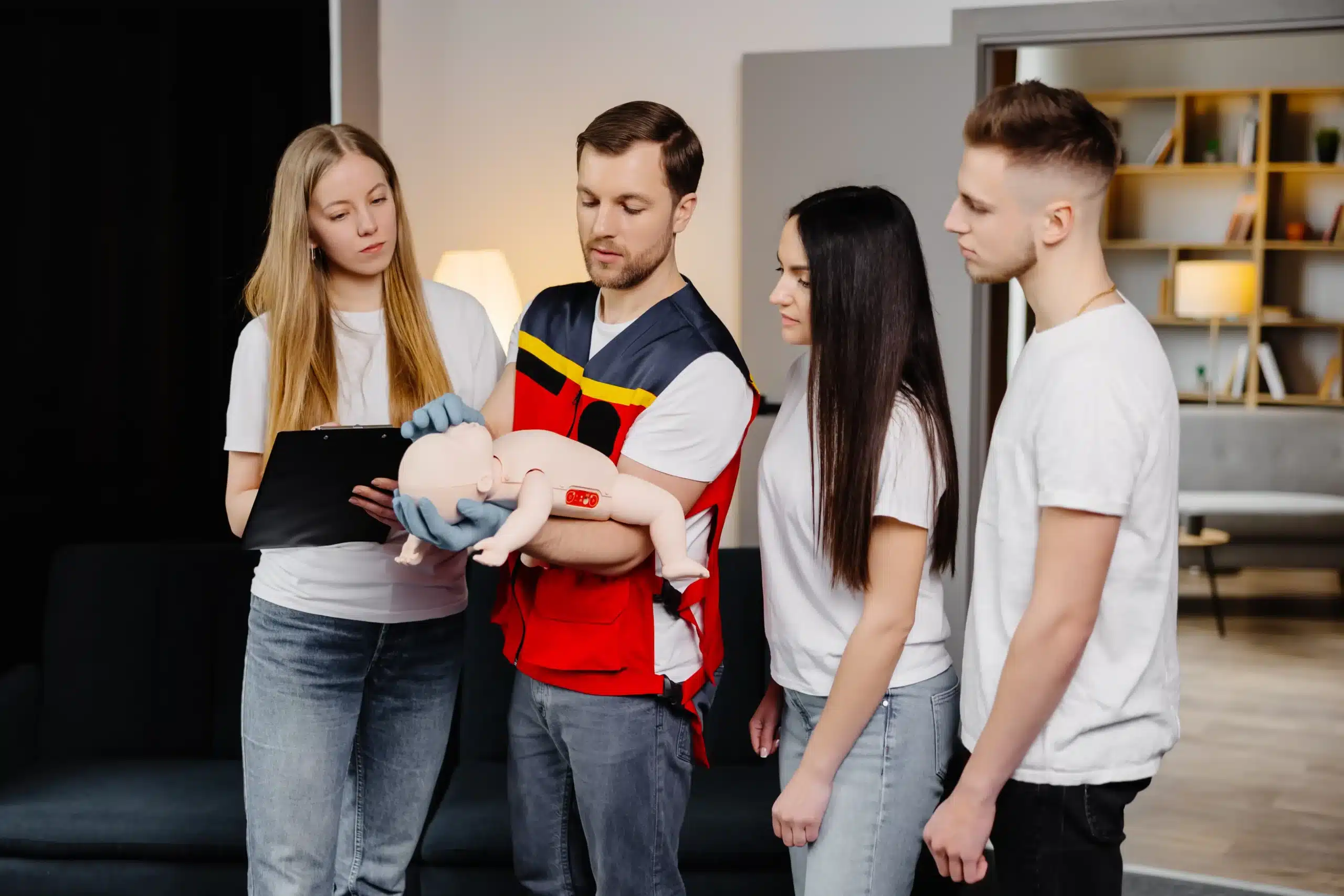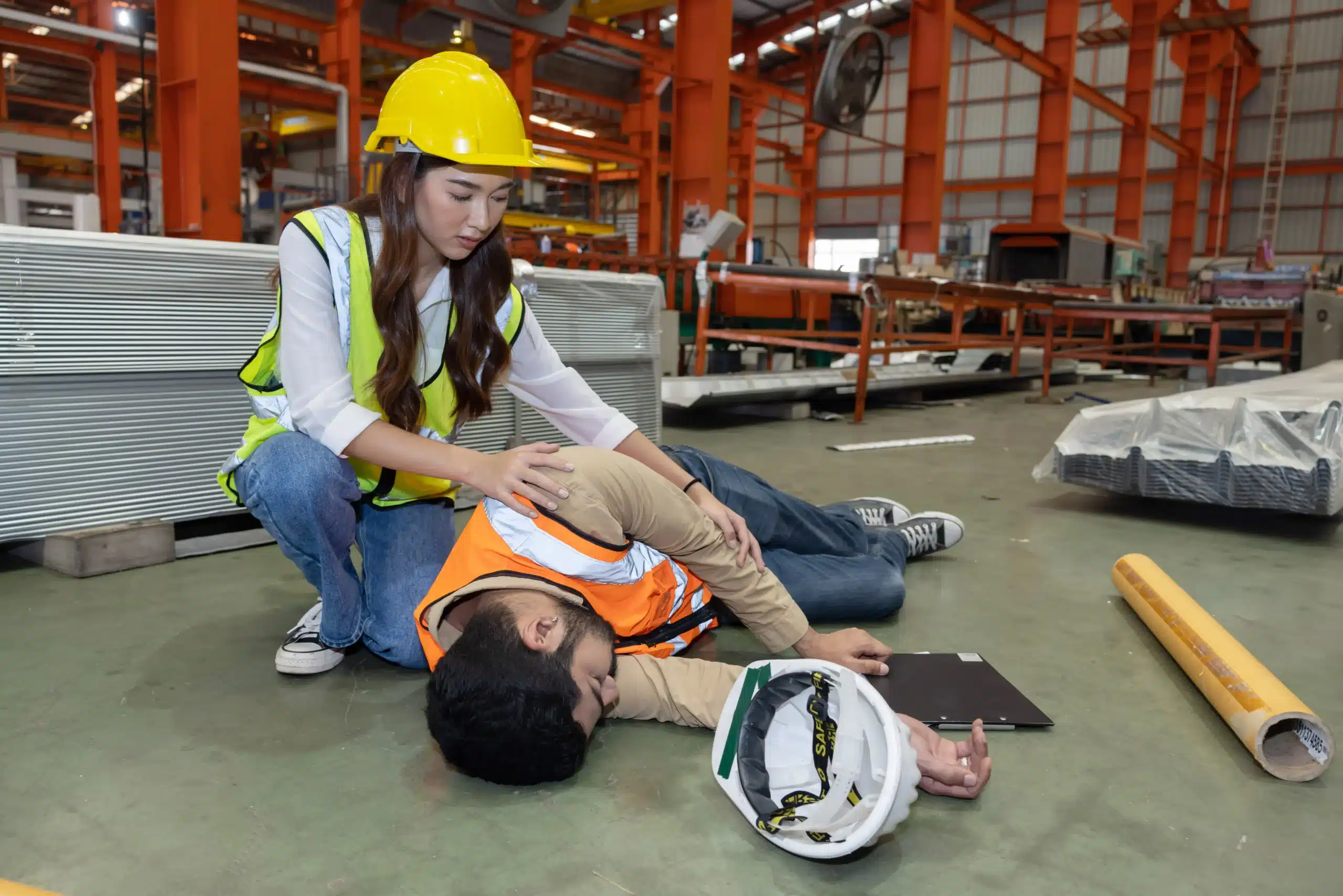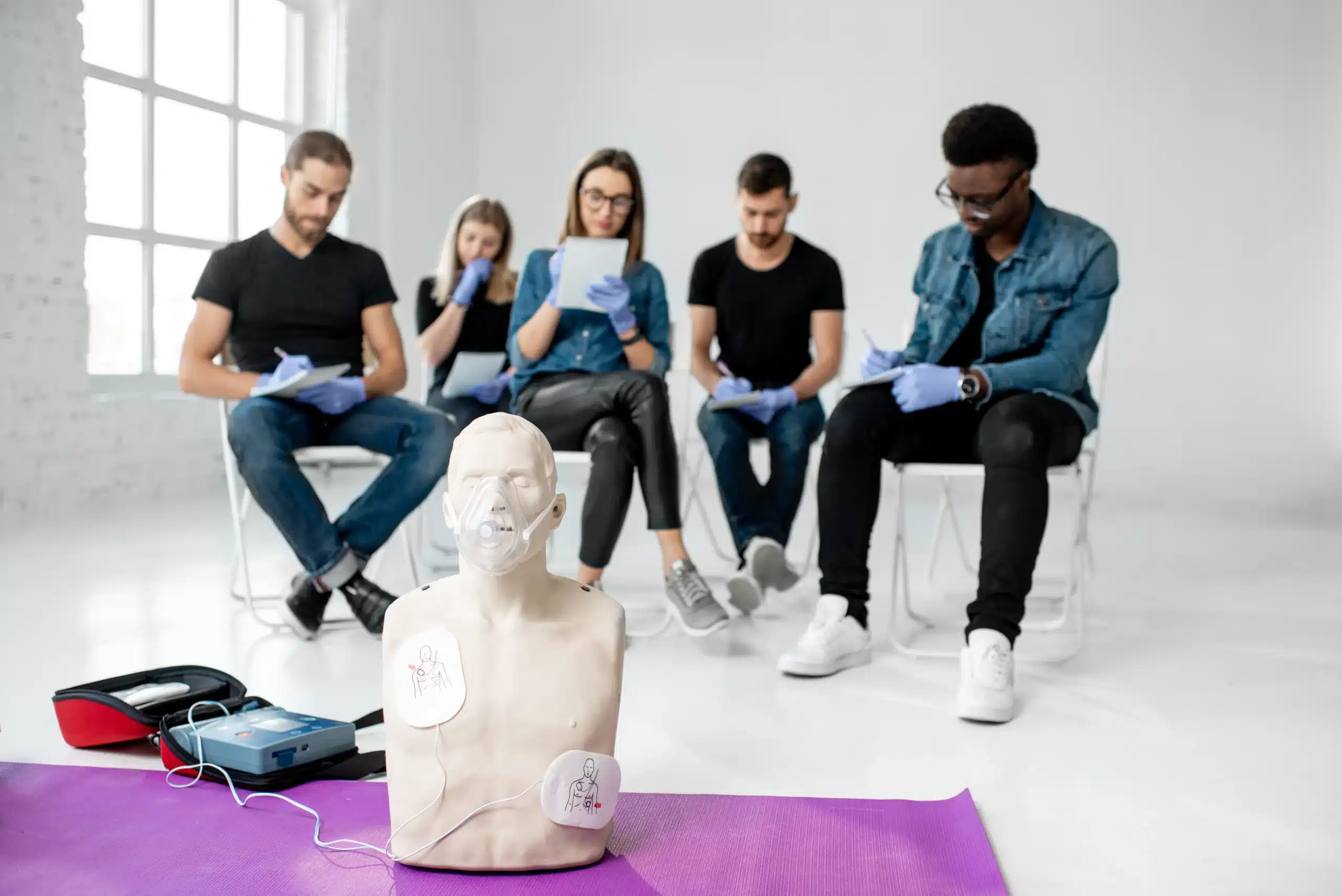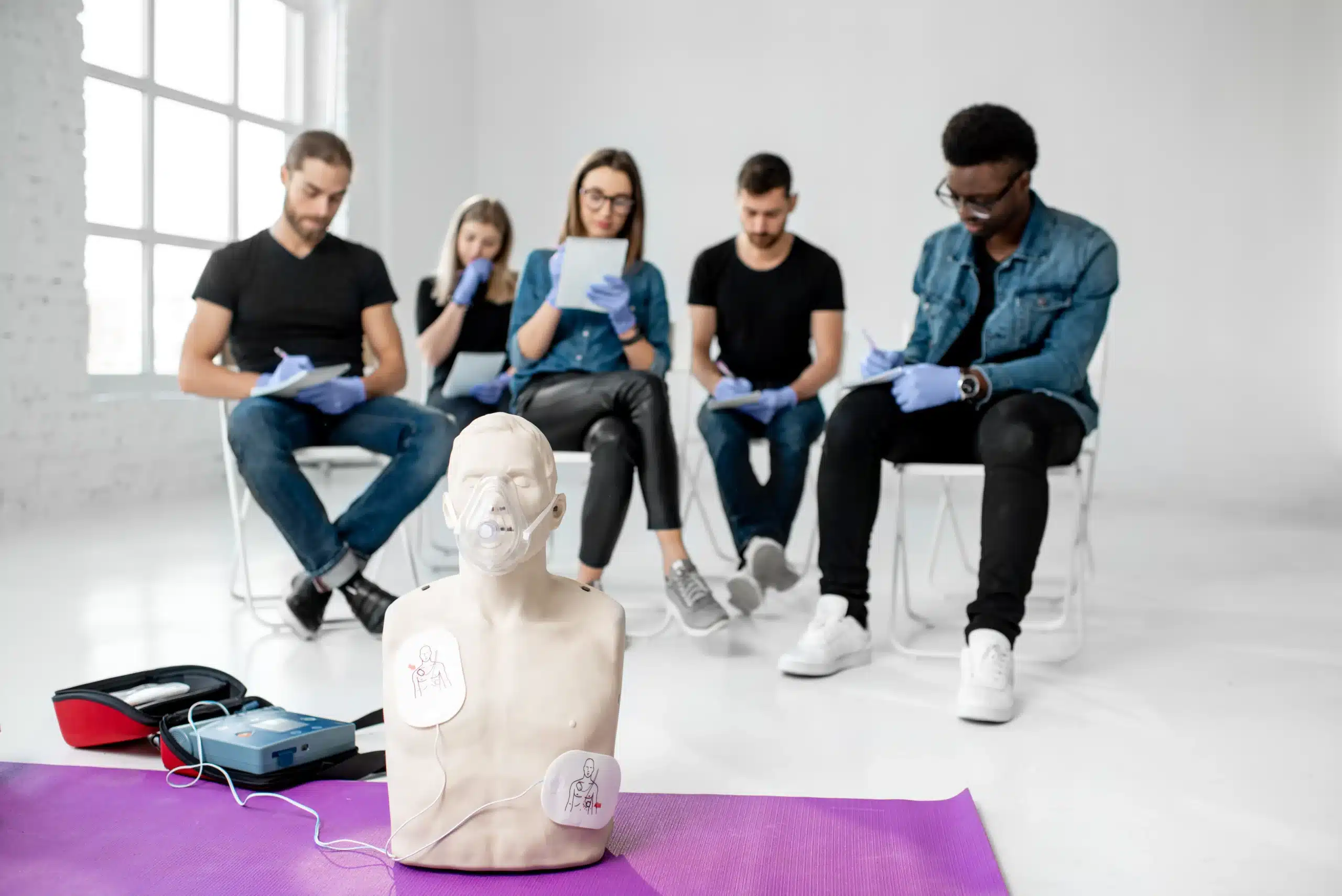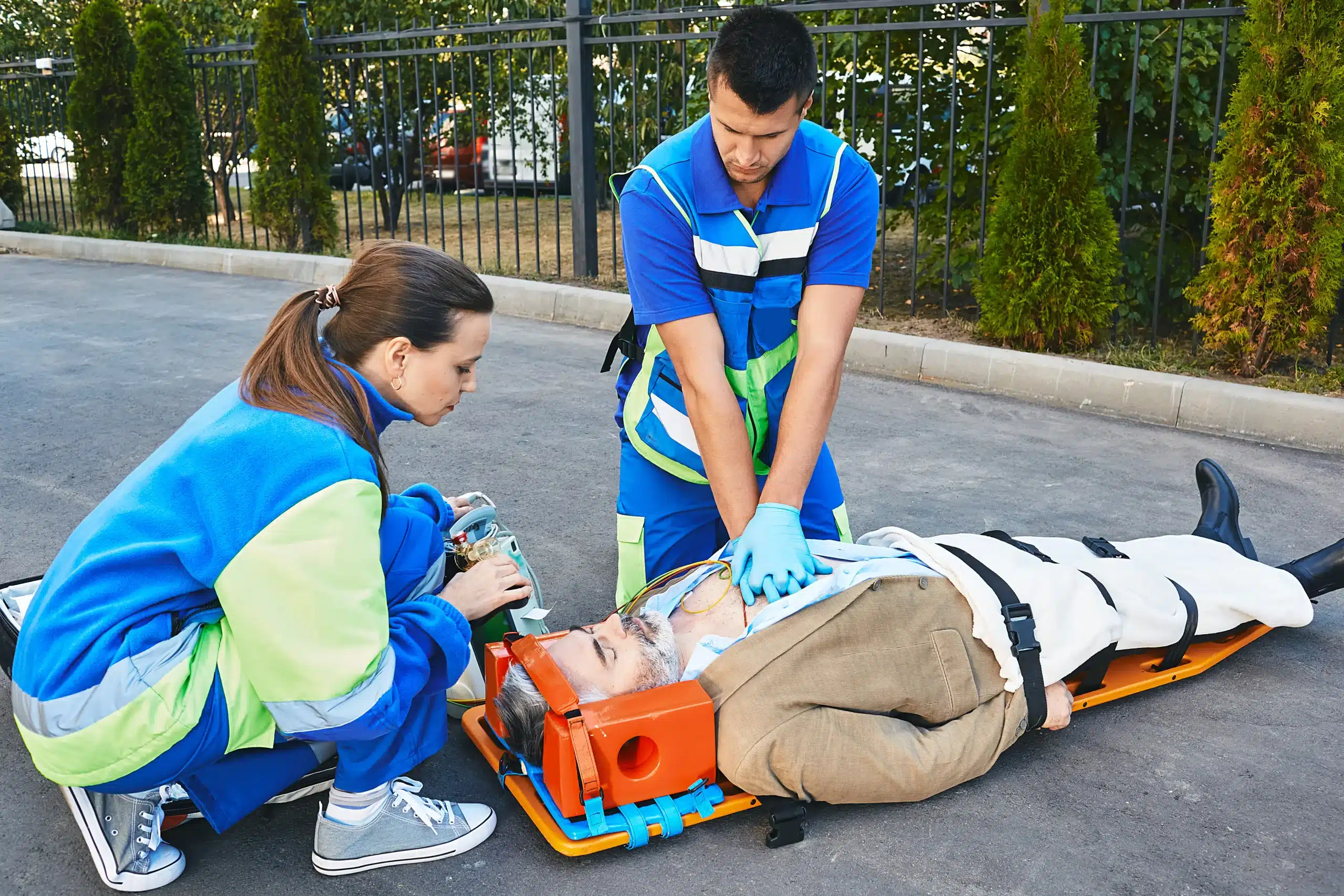Emergencies can happen unexpectedly, and being prepared can make all the difference. Knowing cpr and first-aid in Woodland isn’t just about having a certificate; it’s about having the confidence and skills to act quickly and effectively when it matters most. This guide will explore the importance of cpr and first-aid training in Woodland, the various types of certifications available, and how to choose the right training program for your lifestyle and learning preferences. We’ll also cover how to maintain your skills and ensure you’re always ready to respond in an emergency. Whether you’re a healthcare provider, a teacher, a parent, or simply a member of the Woodland community, this guide will provide valuable resources and practical advice to help you become a more prepared and confident first responder.
Key Takeaways
- CPR and first aid training are crucial life skills: Equipping yourself with these skills allows you to confidently respond to emergencies and potentially save lives in various situations. Seek out reputable providers like Davis CPR Classes or the American Red Cross.
- Choose the training format that works best for you: Whether you prefer in-person instruction, online learning, or a hybrid approach, select the format that aligns with your learning style and schedule. Hands-on practice is essential regardless of the format.
- Regularly refresh your knowledge and skills: Maintain your certification and stay prepared by reviewing course materials, practicing techniques, and taking refresher courses. Consistent practice builds confidence and ensures you can act effectively under pressure.
Why CPR and First Aid Training Matters in Woodland
Knowing CPR and first aid can truly make a difference in your community. Whether you live in Woodland, work here, or are just visiting, having these skills can empower you to respond effectively in emergencies. Let’s explore why these skills are so important.
Life-Saving Skills
CPR certification is critical because cardiac arrests often occur outside of hospitals. Bystander CPR can dramatically improve survival rates. Sadly, hundreds of thousands of people in the US die each year from cardiac arrest, and a significant number of out-of-hospital cases don’t receive this immediate care. Learning CPR equips you to provide assistance while waiting for professional medical help. This quick action can significantly increase the chances of survival.
Workplace Safety Requirements
Many workplaces require employees to have CPR and first aid certifications. This is especially true for jobs where emergencies are more likely to happen. These certifications are typically valid for two years. It’s essential to obtain your training from a recognized organization like the American Heart Association or American Red Cross. This ensures your training meets established standards and is widely accepted.
Community Resilience
Understanding the difference between CPR and first aid is key to responding effectively in emergencies. CPR focuses on restoring breathing and circulation in individuals experiencing cardiac arrest. First aid addresses a broader range of injuries and illnesses, from minor cuts and burns to more serious conditions. Having both CPR and first aid skills allows you to provide comprehensive care in various situations, potentially reducing suffering and preventing further harm. Building a community of trained individuals strengthens Woodland’s ability to handle emergencies effectively and creates a safer environment for everyone.
CPR and First Aid Courses in Woodland
Finding the right CPR and first aid course can feel overwhelming with so many options available. This section breaks down the different types of training you can find in and around Woodland, making it easier to choose what works for you.
AHA Certifications
The American Heart Association (AHA) sets the standard for CPR and first aid training. AHA certifications are widely recognized and accepted. They offer a range of courses, from Basic Life Support (BLS) for healthcare providers to Heartsaver CPR/AED and First Aid for the general public. Davis CPR Classes offers BLS certification and other AHA courses. These certifications often involve hands-on practice and testing to ensure you’re prepared for emergencies.
Red Cross Programs
The American Red Cross is another reputable provider of CPR and first aid training. Like the AHA, they offer various courses for different audiences, including specific training for workplaces and community members. Red Cross certifications are also widely accepted. Certifications typically last about two years, after which you’ll need a refresher course. Check with your employer or local community centers for information on Red Cross training.
Specialized Healthcare Provider Training
For healthcare professionals, more specialized training may be required. Advanced Cardiovascular Life Support (ACLS) and Pediatric Advanced Life Support (PALS) are examples of advanced certifications that build upon basic CPR skills. These courses focus on team dynamics and advanced life-saving techniques. Davis CPR Classes offers RQI classes for medical professionals. You can also find specialized training through organizations like Roxell Emergency Management Training, which offers ACLS, BLS, PALS, and First Aid training.
Public and Workplace Safety Courses
Many organizations offer CPR and first aid courses designed for workplace safety or community preparedness. These courses often cover basic first aid, injury prevention, and how to respond to common workplace emergencies. The Woodlands Township offers emergency training courses. Texas CPR Academy offers CPR and first aid training at various locations. These courses are a great way to equip yourself and your team with essential skills.
Choosing Your Training Format
Deciding on the right training format is a personal choice. Think about your learning style, schedule, and comfort level with different teaching methods. Here’s a breakdown of the most common options to help you decide what’s best for you.
In-Person vs. Online
Traditionally, CPR training has been delivered in person. This allows for immediate feedback from instructors and face-to-face interaction with other students. However, online CPR certifications are also completely valid—and often more effective. The flexibility to learn at your own pace and review the material as often as needed can be a huge advantage. If you prefer a more structured, hands-on approach, in-person classes might be a better fit.
Hybrid Learning
For those who like the best of both worlds, hybrid learning offers a compelling solution. This format combines the convenience of online learning with a shorter, in-person skills session. You can work through the course material online at your own speed and then attend a hands-on session to practice your skills with a certified instructor. This approach can be particularly helpful for those with busy schedules or who prefer to learn the theoretical concepts before practicing the physical techniques.
Hands-On Practice
Regardless of whether you choose online, in-person, or hybrid learning, hands-on practice is crucial for mastering CPR. These courses teach essential, life-saving skills like chest compressions, rescue breathing, and how to use an AED. From Basic Life Support (BLS) to more advanced certifications like Advanced Cardiac Life Support (ACLS) and Pediatric Advanced Life Support (PALS), all reputable programs incorporate hands-on training to ensure you gain the confidence and competence to respond effectively in an emergency.
Local Training Providers and Costs
Finding the right CPR and first-aid training often depends on location, cost, and the type of certification you need. Let’s explore some options, focusing on providers near Woodland, CA, and also including a few examples from nearby Texas to illustrate the range of services and pricing you might encounter.
Davis CPR Classes
If you’re in the Woodland area, Davis CPR Classes is a convenient option. They offer various CPR and first-aid courses, including American Heart Association BLS, ACLS, and PALS. They focus on providing a supportive learning environment and have a low-price guarantee. You can find their course schedule for BLS courses in Davis (serving Davis, Woodland, and Sacramento) and other health and safety training, including EMSA, health, safety, and lead poisoning prevention, on their website. As a woman-owned AHA Training Center, they offer classes in over 60 cities, making them a highly accessible resource.
Comparing Options: Texas Providers
While Davis CPR Classes serves the local Woodland area, looking at other providers can give you a sense of the different approaches to CPR training. For example, if you were in The Woodlands, Texas, you’d find several options:
-
The Woodlands Township Emergency Training Center: This large facility focuses on training emergency responders, offering courses like CPR/AED and First Aid. Their website details their mission to prepare regional emergency personnel.
-
Roxell Emergency Management Training: Roxell EMT, also in The Woodlands, provides AHA-certified courses, including CPR, BLS, ACLS, PALS, and First Aid. They emphasize experienced instructors and offer both in-person and online training. You can explore their course offerings on their website.
-
Texas CPR Academy: Located in Spring, TX, and serving The Woodlands area, Texas CPR Academy offers a range of courses, including CPR, First Aid, AED, ACLS, PALS, and OSHA safety training. They highlight affordable pricing and offer group discounts and on-site training. Learn more about their CPR training classes.
Pricing and Discounts
Cost is often a factor in choosing CPR training. Providers like Roxell EMT often guarantee the lowest prices for their courses and don’t charge rescheduling fees. Others, like Texas CPR Academy, offer group and on-site training discounts. When choosing a provider, don’t hesitate to ask about potential discounts or compare pricing between different options to find the best fit for your budget. Remember, investing in CPR training is an investment in life-saving skills.
Maintaining Your CPR and First Aid Skills
Knowing how to perform CPR and first aid can empower you to help in a crisis. But like any skill, it’s important to keep your knowledge fresh. Regularly reviewing and practicing these techniques ensures you’re always ready to respond effectively.
Certification Renewal
CPR and first-aid certifications typically expire after two years. To stay certified, you’ll need to take a refresher course. Organizations like the American Heart Association and the American Red Cross offer these courses in various formats, including in-person and online options. Check with your certifying organization for specific renewal requirements. Davis CPR Classes offers a variety of renewal courses to fit your schedule.
Refreshing Your Knowledge
Even if your certification is still valid, make a habit of reviewing the material periodically. This could involve rereading your course materials, watching online videos demonstrating proper techniques, or practicing with a friend or family member. Quick reviews can make a big difference in your confidence and recall during an emergency. Consider adding these reviews to your calendar as reminders.
Regular Practice
Hands-on practice is key to mastering any physical skill, and CPR and first aid are no different. Consider attending practice sessions or workshops offered by local training providers like Davis CPR Classes. Regular practice not only reinforces your knowledge but also helps you develop the muscle memory and quick thinking needed to respond effectively under pressure. Knowing the difference between CPR and first aid is crucial, and regular practice will solidify your understanding of both.
Related Articles
- Importance of Workplace CPR & First-Aid Training
- Essential Role of CPR in Healthcare: A Lifesaving Skill
- CPR Certification in Davis: Your Complete Guide – Davis CPR Classes
- First Aid Classes in Sacramento: A Complete Guide – Davis CPR Classes
- CPR & First Aid in Davis: Your Certification Guide – Davis CPR Classes
Frequently Asked Questions
How often do I need to renew my CPR certification? CPR and first aid certifications are typically valid for two years. Renewal courses are readily available through various providers, often in convenient online or in-person formats. Check with your certifying organization for their specific requirements.
What’s the difference between CPR and first aid? CPR focuses specifically on restoring breathing and circulation during cardiac arrest. First aid covers a much wider range of situations, from treating minor injuries like cuts and burns to managing more serious medical emergencies until professional help arrives. Both are valuable skills to have.
Are online CPR certifications valid? Yes, online CPR certifications are completely valid and widely accepted, offering a flexible way to learn these essential skills. Many online courses also include a required in-person skills session to ensure you get practical, hands-on training.
Where can I find CPR and first aid training near me? Numerous organizations offer CPR and first aid training. Start by checking with local hospitals, community centers, or workplaces. The American Heart Association and the American Red Cross also have websites that can help you locate certified training centers in your area. For those in and around Woodland, CA, Davis CPR Classes is a convenient option.
What if I can’t afford the cost of CPR training? Many training providers offer discounts for groups, students, or certain professions. Some organizations may also have financial assistance programs available. Don’t hesitate to contact different providers and inquire about potential cost-saving options.


